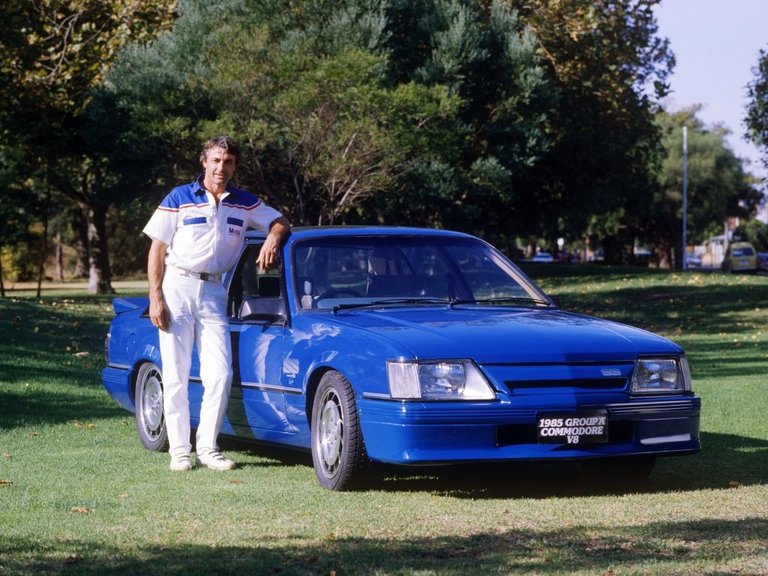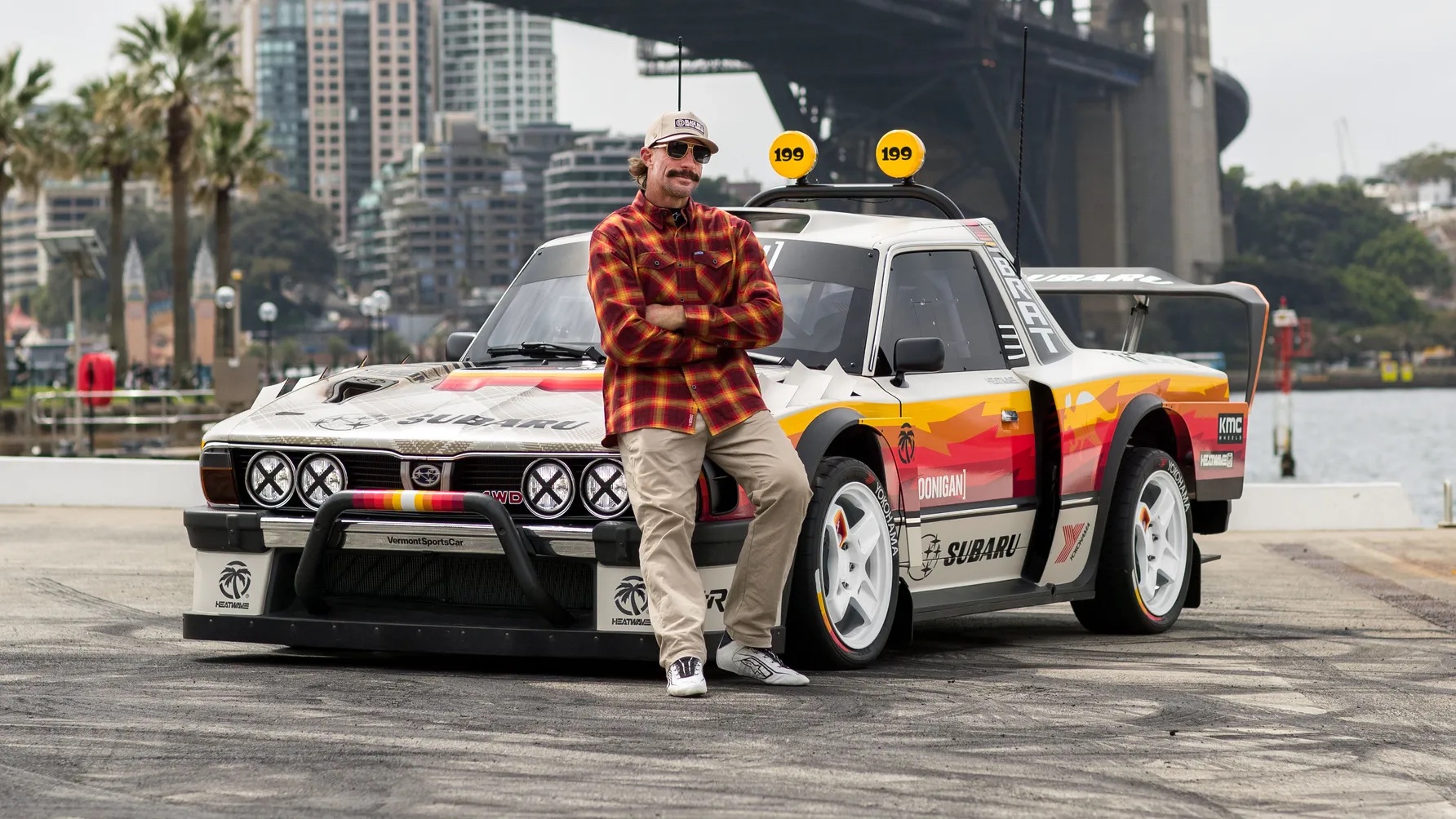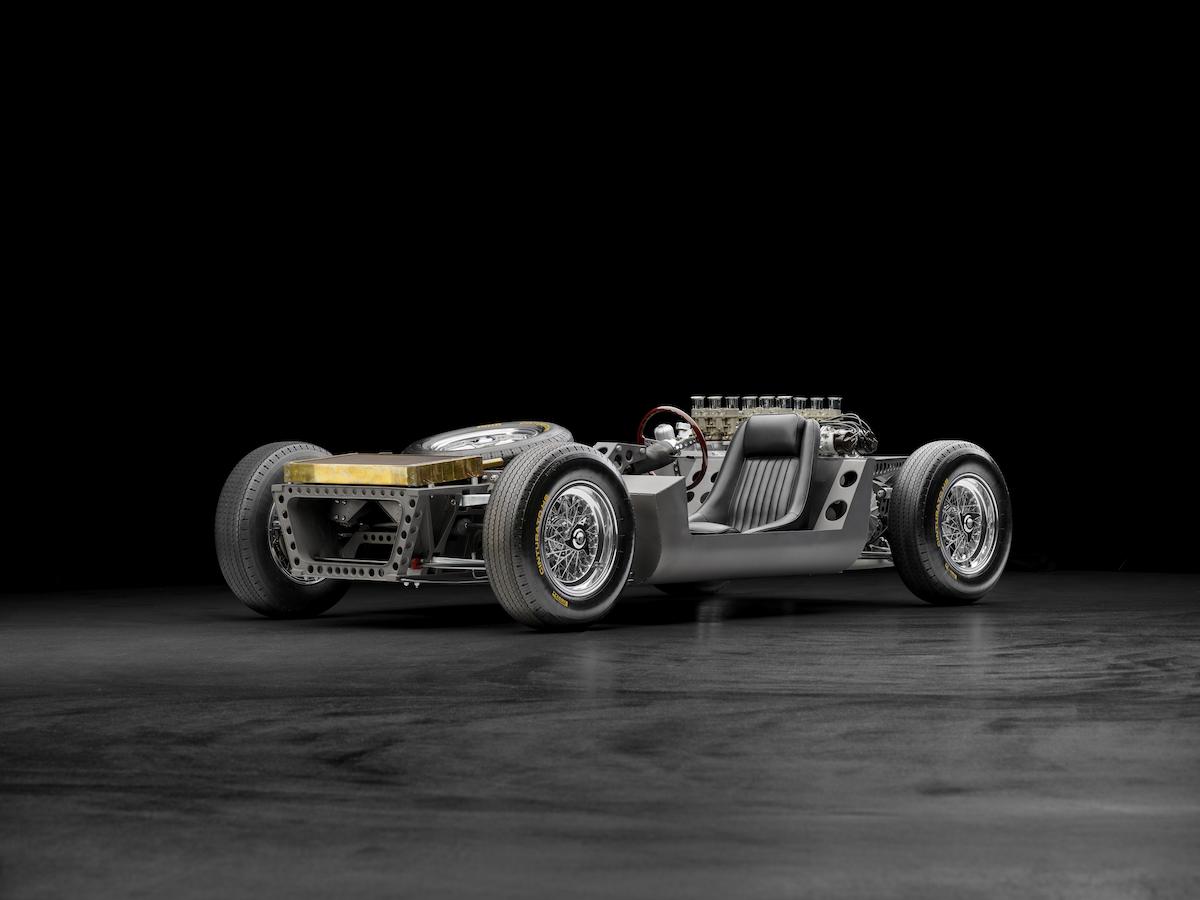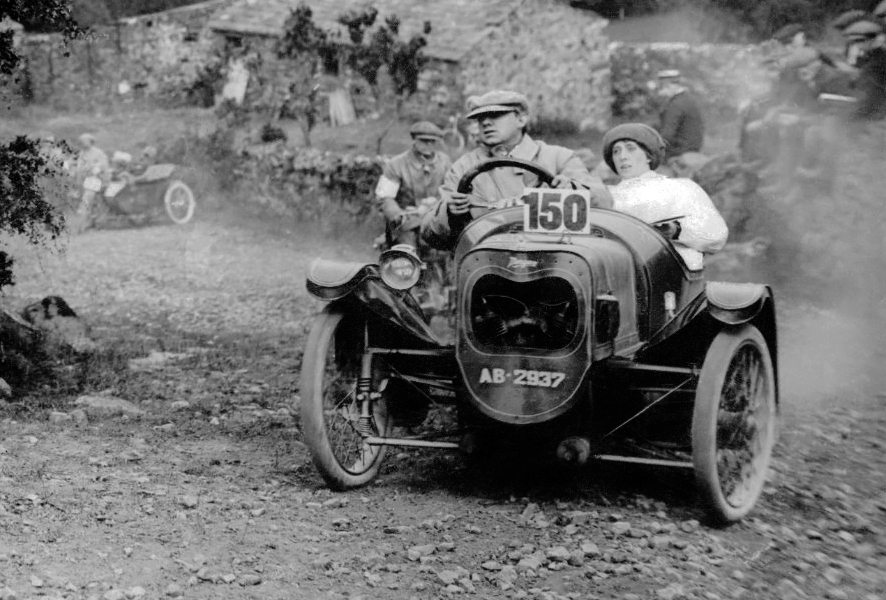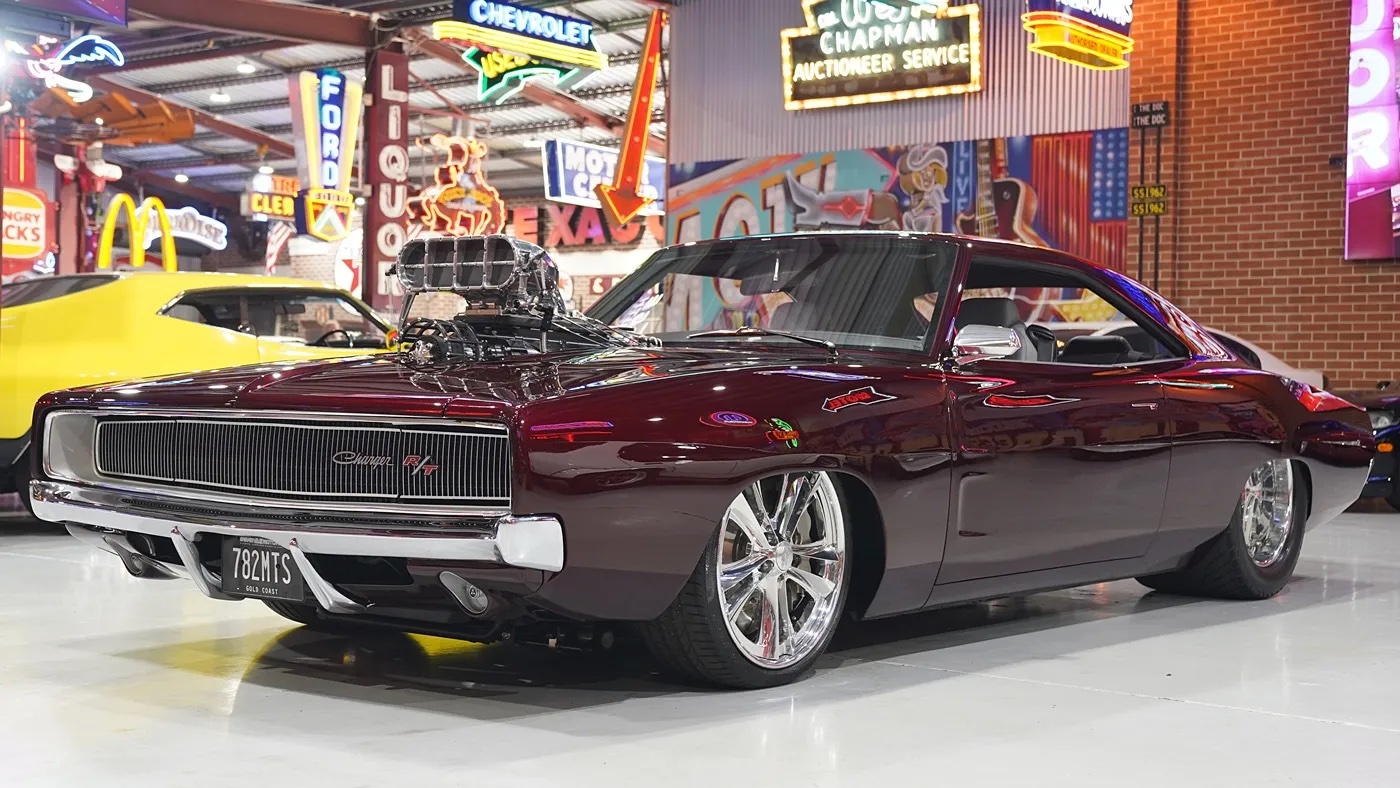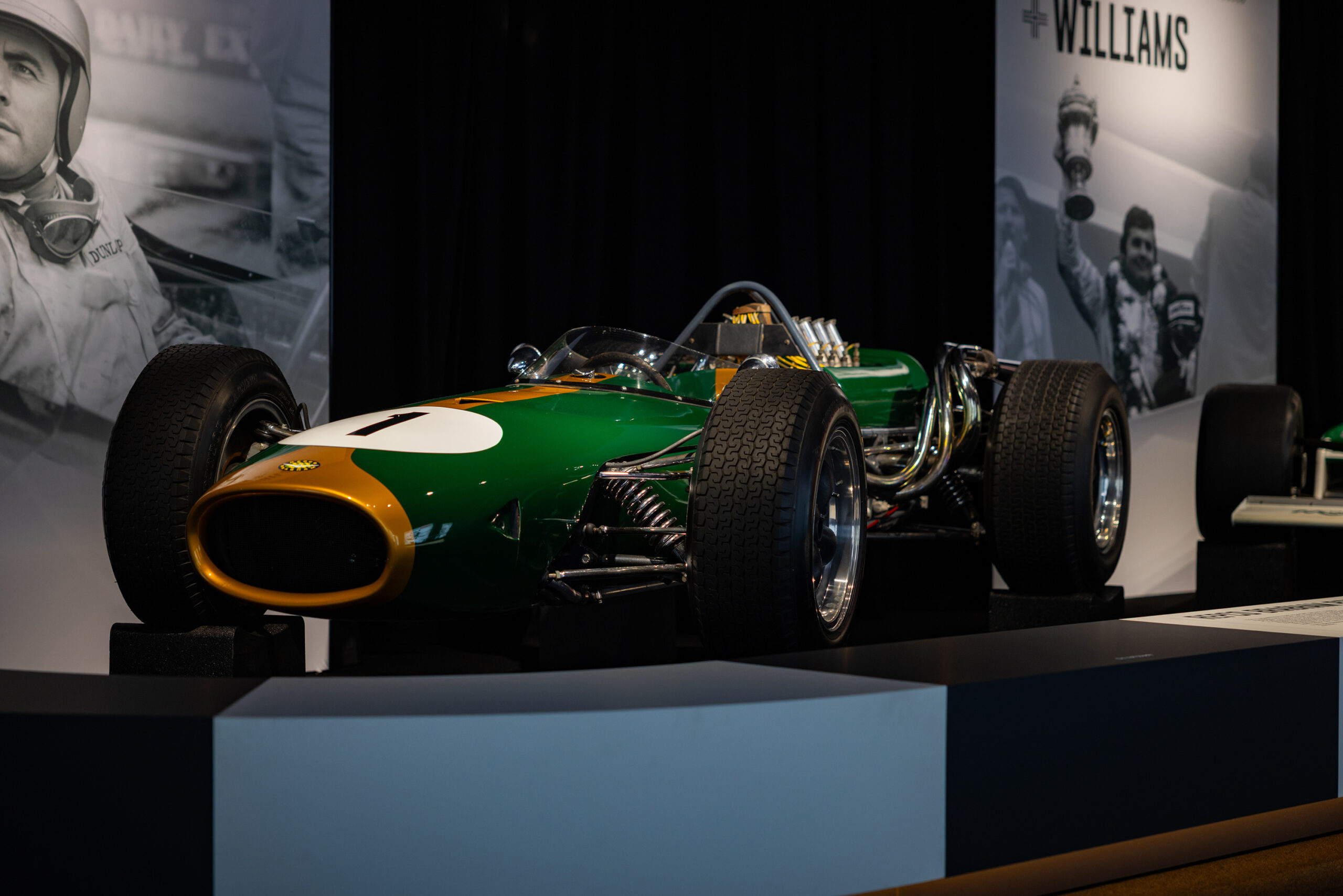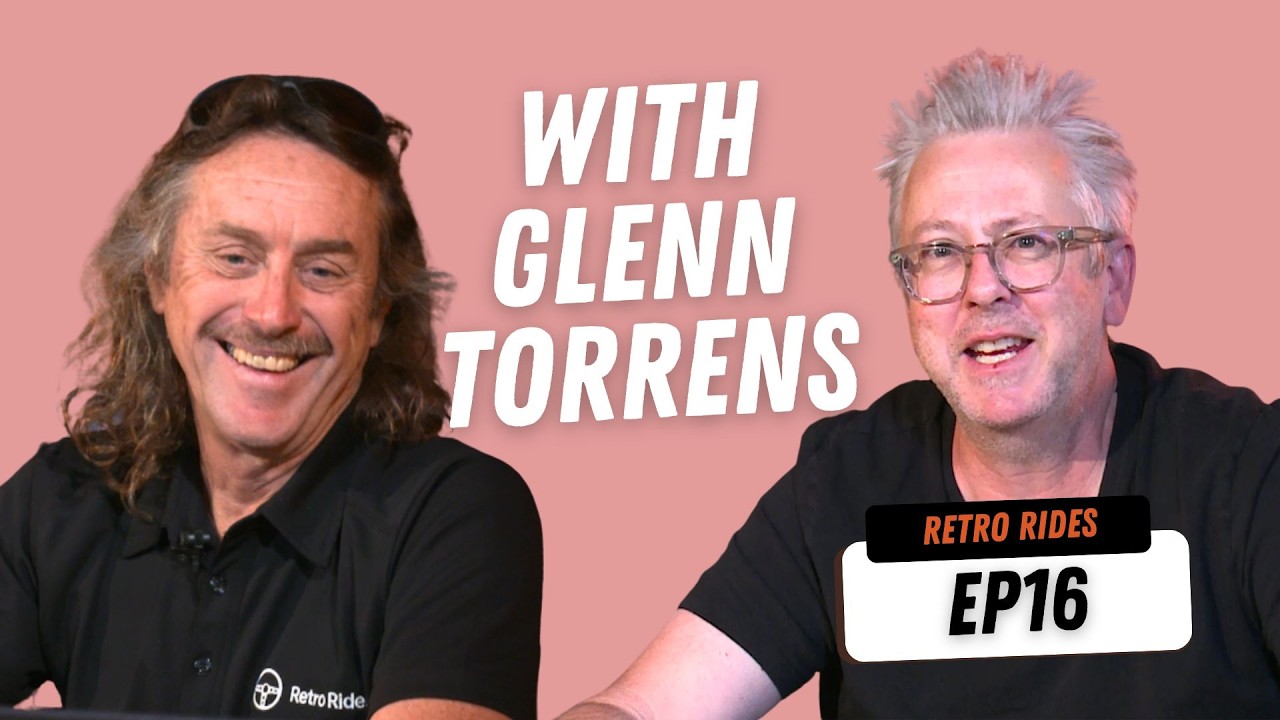Australian motorsport legend Peter Brock created some of Australia’s most iconic and controversial performance cars. We asked Retro Rides’ Market Analyst Cliff Chambers to view a range of models produced by Brock’s Holden Dealer Team operation, considering their appeal as drivers’ cars and long-term investments. Here’s Cliff’s picks of the five most collectible road cars from the legendary racer’s back catalogue.
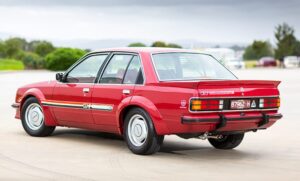
Image: Unique Cars
HDT VC COMMODORE (1980-1981)
The 1980s dawned with serious financial issues facing Australia’s most successful Touring Car competitor.
Due to soaring petrol prices and dysfunctional Design Rules, local production of performance cars had seriously waned since 1975. As a consequence, both Holden and Ford were by the 1980s considering elimination of V8 models altogether from their local ranges.
Holden had also withdrawn its support for motor sport, leaving front runner Peter Brock and others facing a cash crisis and without a Holden to race. Brock’s response to one problem coincidentally delivered a solution to the other as well.
Under an arrangement with selected dealers, Brock would be supplied with VC SL/E sedans straight off the production line for conversion into the first HDT (Holden Dealer Team) Commodores.
Palais White, Firethorn Red and Tuxedo Black were the available colours and all cars were built with burgundy cloth trim. Major external changes included guard flares to cover distinctive Irmscher alloy wheels, front and rear air-dams and HDT striping.
Under the bonnet, Brock’s folk went to work installing larger valves and an improved inlet manifold, matched to a dual exhaust system. There was also a bigger radiator and suspension upgrades including stiffer springs with Bilstein strut inserts, supplemented by improved brakes and a limited-slip differential.
Initial price lists quoted a base of $18,999 but most sold at $19,800; a premium of $4200 on the cost of the ‘donor’ VC SL/E.
HOW IT DRIVES
No one had any doubt that a road car breathed on by Brock would be good. Even sceptics who wondered how a shoe-string operation like HDT could deliver a factory-quality product were impressed.
The VC handled like no previous Holden. Body-roll was minimal, yet ride quality remained excellent. Handling was described by magazine test-drivers as ‘impeccable’ with minimal understeer and the ability to balance the car accurately with throttle and minor steering corrections.
Tinkering with the engine’s intake and exhaust tracts boosted power to 160kW and dropped the 0-100km/h acceleration time to 8.4 seconds – an improvement of almost a second on a stock SL/E four-speed. Fuel economy with the manual cars’ 3.36:1 final drive was a respectable 16L/100km.
CHECKLIST
Lots of VC Brocks were mistreated early in life, so inspect carefully for quickie repairs and repaints before outlaying the significant money now being asked.
Ensure that all the HDT identifers and special items including the Momo wheel, numbered plaque, correct wheels and tools are with the car.
Mechanically, the VC is durable and most problems are easily rectified. Oil leaks are typical of poorly-maintained Holden V8s and overheating points to a worn water pump, clogged radiator or both. The definitive Irmscher alloy wheels need to be undamaged and the high-spec suspension properly maintained to ensure the intended ride/handling balance isn’t compromised.
INVESTMENT POTENTIAL – 6/10
Brock’s first effort wasn’t close to his best, but VC versions did offer a promising start.
Novelty value and a wild single marque race series involving some of the country’s best drivers ensured that Brock sold every VC his team could build, while laying the foundations for a local automotive legend.
These cars certainly are a world apart from a basic VC SL/E V8. The Brock car sits lower, sounds better and is slightly faster. Market analysis shows VC HDTs generally at double the price or more of a manual 5.0-litre SL/E, despite being a little easier to find than the stock version.
BRIEF SPECS
Number Built: 500
Body: four-door sedan
Engine: 5.0-litre V8
Power & Torque: 160kW @ 4500rpm, 450Nm @ 2800rpm
Transmission: four-speed manual, three-speed automatic
Suspension: Front – independent with coil springs, Macpherson struts and anti-roll bar; Rear – live axle with Panhard rod and anti-roll bar
Brakes: disc front/disc rear – power assisted
Price Range: $75,000-135,000
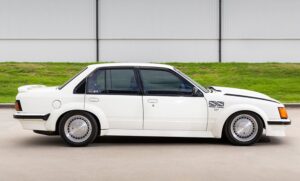
Image: Holden Forums
HDT VH GROUP III (1982-83)
By 1983 HDT was an established brand and had the local performance car market virtually to itself. Ford had stopped making V8s and Holden was supplying V8-powered Commodores only to the police and Peter Brock.
Brock’s VH was a car that brought a harder edge to HDT product. It was also offered at different performance levels, even though hardly anyone wanted Group I and II versions with 4.2-litre engines and at prices that began below $14,000.
Most VH buyers went for a Group III which used the Holden’s 5.0-litre V8. With HDT enhancements the engine delivered 184kW and 0-100km/h in 6.73 seconds.
Most obvious among the Group III’s visual changes was deletion of the VC’s clunky wheel-arch flares, but the 7.0-inch Irmscher wheels and Brock’s favoured Uniroyal radials remained.
A full kit of body embellishments included a Torana A9X-style air-scoop and a pair of mudguard-mounted wind ‘splitters.’ Slow selling Tuxedo Black was dropped from the colour range, leaving VH buyers to choose between red and white.
Although it spent almost two years in the market, HDT’s VH couldn’t match the VC version’s novelty appeal and sales dipped to below 400 units.
HOW IT DRIVES
Extra power developed by VH versions of the HDT V8 helped lift the performance of the Group III, with the 0-100km/h sprint taking less than 7.0 seconds on the way to a top speed of 210km/h at the 5500rpm redline.
The major difference between a Brock-modified Commodore and standard cars still rested with chassis balance and steering response. Uprated springs and gas shock absorbers helped to virtually eliminate body roll and rein in the roll oversteer that could get unruly in lesser Commodores.
Automatic and four-speed manual cars used the same 3.08:1 rear axle ratio and both would sprint to over 80km/h in either Low or first gear. In a manual, second slot was good for 115km/h, making for rapid overtaking.
CHECK LIST
Like its VC predecessor, the VH can show signs of owner misuse and repairs that were hastily made as values surged. Ensure that panel gaps are consistent and the side-skirts undamaged. Replacement body kits to the original pattern are being made but they can never exactly duplicate the original items.
Choose if you can a car with minimal wear to the steering wheel and velour seats. Retrimming is possible but also expensive. Age will by now be affecting the electrics even in well-maintained cars, so check that all instruments work and major items like power windows and air-conditioning function properly.
Cars that have been modified in ways that can’t be easily reversed will be worth less than those maintained in authentic condition.
INVESTMENT POTENTIAL 6/10
This was the first HDT car to offer a range of models, even if hardly anyone bought a 4.2-litre version.
Almost everything in the VH market will be a top-spec Group III, with better performance than the VC at similar money.
Like the VC, these do look a bit contrived, with strange additions like the mudguard mounted wind splitters seemingly there just for decoration, although Brock would probably have argued otherwise.
Values, even though the VH is scarce, are similar to the VC and their long-term prospects don’t match the later VK.
BRIEF SPECS
NUMBER BUILT: 322
BODY: four-door sedan
ENGINE: 5.0-litre V8
POWER & TORQUE: 184kW @4750rpm, 430Nm @3500rpm
PERFORMANCE: 0-100km/h 6.7 seconds, 0-400 metres 14.9 seconds
SUSPENSION: Front – independent with coil springs and struts; Rear – live axle with coils springs and Panhard rod and anti-roll bar
BRAKES: disc front/disc rear – power assisted
PRICE RANGE: $80,000-145,000
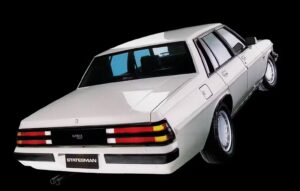
Image: Unique Cars
HDT MAGNUM (1984)
It comes as no surprise that the late John Harvey while a Director at HDT, rated the Magnum as “one of the best handling large sedans in the world.” Nor is it difficult to understand why journalists who experienced HDT’s only Statesman-based model agreed with Slug’s assessment.
Magnums came off Holden’s production line with equipment specified by individual customers already installed, then were diverted to HDT for chassis and performance upgrades.
Caprice versions sometimes missed out on the definitive HDT alloy wheels; buyers electing to save some money and stick with the factory rims.
Blacked-out brightwork gave Magnums a sinister profile and highlighted the lowered stance that came via a combination of shorter springs, Bilstein shock absorbers and heavier anti-roll bars.
The interior, apart from a three-spoke steering wheel and Brock’s favoured driver’s footrest, was basically unchanged, with cloth or leather seats according to buyer preference. Magnums came standard with air-conditioning, cruise control, a trip computer and sometimes a sunroof.
Basic changes under the bonnet were limited to heat-painted exhaust headers and a free-flow air-cleaner. However, for an extra $2750 there was a proper engine upgrade that saw output reach 188kW.
Pricing for the Magnum upgrade began at $4950 and took the cost of a ‘basic’ De Ville version to $27,000.
Sadly, for HDT and large car lovers across the country, Holden cancelled the WB in late 1984 and restricted Magnum production to around 120 cars.
HOW IT DRIVES
Although Brock’s version of Holden’s WB behemoth weighed over 1600kg and had a super-tall 2.6:1 final drive ratio, it would still cruise through the standing 400 metres in 16.7 seconds. Optioned with a 3.08:1 final drive and 188kW engine that time plunged below 16 seconds.
Locking the automatic transmission in second delivered excellent response when dealing with twisty roads and provided some respite for the huge but hard-working all-wheel discs. Optional 16-inch wheels with P7 Pirelli tyres added more than $1000 to the price but gave up-spec Magnums a huge advantage in grip and stability over the standard Statesman.
They say if you need to ask about fuel consumption you can’t afford the car, but the biggest HDT isn’t astonishingly thirsty. If the one you find has HDT’s optional 126 litre tank you’ll spend a lot filling up but then won’t need to stop again for around 800 kilometres. Careful driving would see a Magnum complete the Sydney-Melbourne run on a single tank.
CHECK LIST
Before paying maximum money for a Magnum, ensure that specialised components like the alloy rims, Momo steering wheel , chromed air cleaner, rocker covers and Brock decals are undamaged.
Statesman steering is a weak point, with problems including pump leaks and cracks around the steering box mounting points. With abundant bulk to control, the steering, springs and shock absorbers need to be in top condition, otherwise budget circa $6000 for replacement parts.
INVESTMENT POTENTIAL 7/10
The problem with valuing the Magnum is finding a car on the open market. Some offered in the past have made significantly less than Commodore-based HDTs, but logic suggests the big car is undervalued.
Keen buyers might join an HDT/HSV owners club and look around at events to see if a Magnum appears and approach the owner to see if the car is for sale. Don’t be surprised if you’re directed to the back of a long queue.
BRIEF SPECS
Number Built: 100-120
Body: four-door long wheelbase sedan
Engine: 5.0-litre V8
Power & Torque: 188kW @ 5000rpm, 429Nm @3500rpm
Performance: 0-100km/h 9.4 seconds; 0-400 metres 16.7 seconds
Transmission: three-speed automatic
Suspension: Front – independent with coil springs, gas shocks and anti-roll bar; Rear – live axle with coil springs, Panhard rod, telescopic shocks and anti-roll bar Brakes: disc front/disc rear power assisted
Price Range: $55,000-75,000
HDT VK GROUP A (1984-1985)
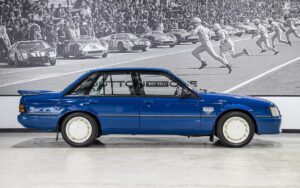
Image: Duttons
By March 1984 when Holden released its face-lifted VK models, HDT was ready to introduce a multi-dimensional range of its own.
Customer choices began with the 177kW SS and culminated in 1985 with a new 4.9-litre that would provide the platform for Brock’s international Group A competition campaign.
The VK marked a shift in the manufacturing relationship between Holden and HDT. Rather than taking completed cars and tossing away perfectly good wheels and other components, Brock supplied parts that were fitted as the vehicles moved down Holden’s assembly lines.
In SS form, the HDT VK replaced Holden’s short-lived VH model of the same name. Apart from alloy wheels and a basic body kit, the car looked pretty much stock and was marketed to value-driven buyers via the advertising tag-line ‘At the price, nothing even comes close.’
Despite bland appearance, the SS didn’t stint on performance and would zip from 0-100km/h in 7.6 seconds.
The new Group 3 added a single-slot ‘letterbox’ air-intake, full side skirts and ‘Aero’ alloy wheels. Helping justify a $4000 price jump over the standard SS was a more opulent interior that included Scheel seats and an uprated sound system with nifty joystick fader control.
While the stock VK SS was available in white or silver, the Group 3 came in white only.
More significant was the ‘Blue Meanie’ SS Group A. These were all painted Formula Blue, with polished or white-painted wheels and a tray-type rear air-dam.
Downsizing of the engine to comply with international Group A race regulations was accompanied by a range of performance and durability modifications. These included roller camshaft rockers, a dual-row timing chain, L34 connecting rods and an altered inlet manifold. Output from standard versions was 196kW, making these the most powerful HDTs of all.
HOW IT DRIVES
Brock’s VK SS Group A was and remains the most desirable of mainstream HDT models.
These weren’t quite the fastest-accelerating HDT cars, with road test times for 0-100km/h ranging from 6.9-7.6 seconds.
Those numbers came with the standard 3.08:1 rear axle ratio, though, which let the engine rev almost to its 6000rpm redline for a top speed of 215km/h. Helping stop the VK from speeds like that were 281mm diameter discs, ventilated at the front, which virtually eliminated fade.
Equally impressive was the cars’ balance and cornering grip which were in large part due to Brock’s adoption of larger 16×7-inch wheels and Bridgestone Potenza tyres. This marked the start of a relationship with the tyre manufacturer that would continue until Brock’s untimely death in a tarmac rally accident in 2006.
Other suspension upgrades included a 27mm diameter front roll-bar and Bilstein gas shock absorbers.
While the bulk of Group As made do with a four-speed M21 transmission, the final batch of Group A/3 cars could be specified with the Borg-Warner T-5 that would become standard on VL versions.
CHECK LIST
As values for Group A cars climbed, the temptation to build VK Group A ‘clones’ will have increased, making verification essential.
In addition to the risk of replicas, cars damaged when closer to new were exposed to cut-cost crash repairs and resprays. Look at door shut-faces to confirm the paint age matches. Poor panel fit and cracked bumpers indicate a car that should be avoided or priced well below the average.
Interior trim is durable and in low kilometre cars should have survived without visible wear or fabric deterioration. A full re-trim is possible but items specific to the Group A like the Momo steering wheel may not be available.
INVESTMENT POTENTIAL 8.5/10 (GROUP A)
Anyone who knows their HDTs will tell you that the car to own is a Blue Meanie (aka VK Group A in Formula Blue) with a 5.04-litre or 4.9-litre V8. It is generally accepted that 502 of the basic Group A VK were built, plus a further 50 of the Group A/3 with more elaborate interior and body additions.
Distance travelled and celebrity ownership will influence VK values more than whether the car is a Group A/3 or not. Auction prices during 2021-22 were headed by the $1.05 million paid for a car previously owned by Peter Brock and several others that topped $300,000. The highest seen recently was $245,000 which is still a good return on a car that cost around $22,000 when new.
BRIEF SPECS
Number Built: 552 Group A, (others total 700-800 total)
Body: four-door sedan
Engine: 5.0 or 4.9-litre V8
Power & Torque: 196kW @ 5200rpm, 418Nm @ 3600rpm (Group A)
Performance: 0-100km/h 7.0 seconds; 0-400 metres 14.9 seconds (Group A)
Transmission: four- or five-speed manual, three-speed automatic
Suspension: Front independent with coil springs Macpherson struts and anti-roll bar; Rear – live axle with coil springs, Panhard rod and anti-roll bar.
Brakes: disc front/disc rear power assisted
Price Range: $160,000-265,000 (Group A)
HDT VL GROUP A PLUS PACK (1986-87)
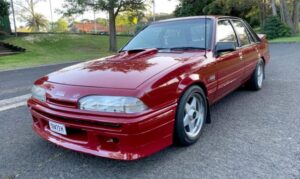
Image: Unique Cars
Peter Brock’s final Holden-based range was the master driver’s most diverse and without doubt his most controversial. This was also the only HDT series to include six-cylinder models.
HDT’s centrepiece was still a V8 in the form of the Permanent Red VL Group A SS. At an advertised 137kW, engine output seemed way shy of the VK but reflected a change in measurement criteria rather than a significant decline.
Disputes with Holden over the controversial Energy Polariser ensured that less than half of the VL Group As made would carry the strange resin-filled box and Peter Brock’s signature decals.
Equally bizarre was the ultra-weird VL Director; a $83,000 indulgence carrying some of the strangest items of body embellishment fitted to an Australian car.
Less than a dozen Directors were built, after being announced at the 1987 Melbourne Motor Show to less than rave reviews. Polarisers were intrinsic to the Director’s design as well and history will show that it was this controversial device, along with Brock’s unshakeable belief in its efficacy, that was the straw that finally fractured the long and largely productive partnership between ‘Peter Perfect’ and Holden.
Even after the official relationship ended, Brock continued to build modified Commodores. These included the Aero which appeared in 1988 and used a toned-down version of the Director body kit. It could also be ordered with a 5.6-litre ‘stroker’ V8 that delivered 255kW.
Most impressive of HDT’s six-cylinder cars was the Calais-based LE. These had initially been available only as a V8 with automatic transmission before Holden’s turbo 3.0-litre engine appeared and the LE blossomed as a performance car.
LEs were pretty much a cash cow for HDT, coming straight off the production line to customer order and with Brock’s operation responsible only for the body kit, Momo ‘starfish’ wheels and other embellishments.
HOW IT DRIVES
The Group A SS is a striking car but lacks the outright performance of a VK. Then again, the five-speed gearbox made it more relaxed and enjoyable to drive in pretty much any circumstance. Excellent examples also cost way less than a Group A VK in equivalent condition.
Finding a VL with one of Brock’s controversial Energy Polarisers still attached is important to maintaining the car’s unique heritage and value, even if any other influence depends on ‘faith.’
Tests conducted by experienced journalists could discern no difference between an HDT ‘Signature’ Group A and Holden-sourced version without Brock’s Box.
What they did confirm was that running low-profile tyres over rough roads at Brock’s preferred 22psi won’t do your Momo rims any good.
Few people have driven one of the nine VL Directors known to have been made, but magazine evaluations suggest that the strange ‘aero’ pack hadn’t made it any quicker or quieter than the more conservative Group Three.
VLs were the first HDT cars engineered to run on Unleaded fuel and seem to benefit from the change. A Signature Group A managed 12.0L/100km in highway running and a test average of 14.5L/100km. Devotees might say that would be the Polariser doing its job.
CHECK LIST
Authenticity again is critical and identification can be difficult when confronted with a low-production variant. HDT Special Vehicles is now producing a range of decals and other difficult-to-source items.
Be wary of overheating or signs of oil leaks. These cars should be run on Premium fuel and have the spark plugs replaced regularly to avoid carbon residue. Comprehensive service history will confirm if a car has been properly maintained.
INVESTMENT POTENTIAL 7/10
The final version of anything will usually ensure strong demand but HDT’s VL range hasn’t achieved the expected heights. Plus Pack (Polariser) versions of the Group A will usually make more than $100,000, as will the ultra-scarce and monumentally ugly VL Director.
With around 300 Plus Pack cars made and owners aware of their significance, there should be no problem sourcing a decent car. However, they aren’t often available and pickings since the Pandemic when one car hit $160,000 have been very lean.
Owners perhaps are hoping that values will again hit that peak, yet in the medium term any price above $120,000 is going to represent excellent money.
BRIEF SPECS
Number Built: 250-400 (est.) plus 325 Holden VL Group A Plus Pack
Body: four-door sedan and station wagon
Engines: 3.0-litre turbo and non-turbo six-cylinder, 4.9-litre and 5.6-litre V8
Power & Torque: 137kW (net) @ 4400rpm, 345Nm @3200rpm (4.9 litre)
Performance: 0-100km/h 7.6 seconds; 0-400 metres 15.7 seconds (SS Group A)
Suspension: Front – independent with coil springs, Macpherson struts and anti-roll bar; Rear – live axle with coil springs, Panhard rod and anti-roll bar

